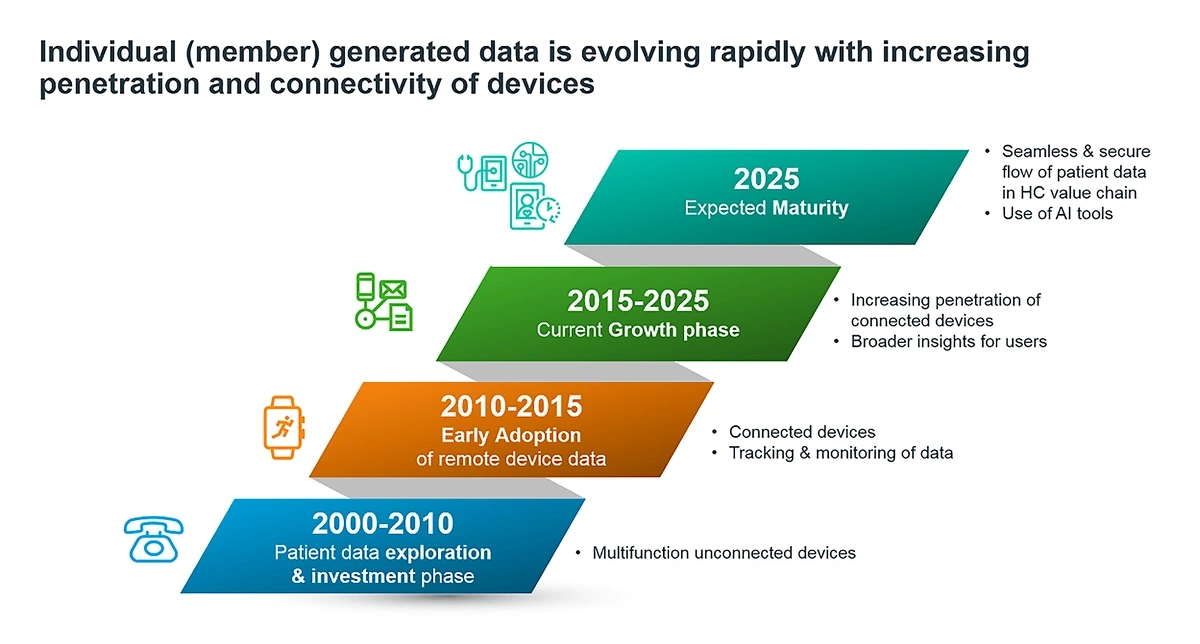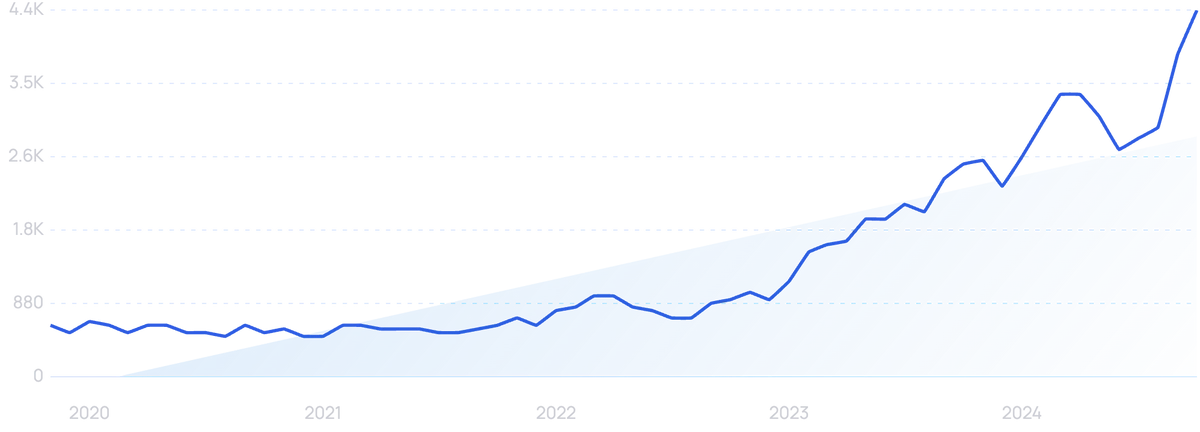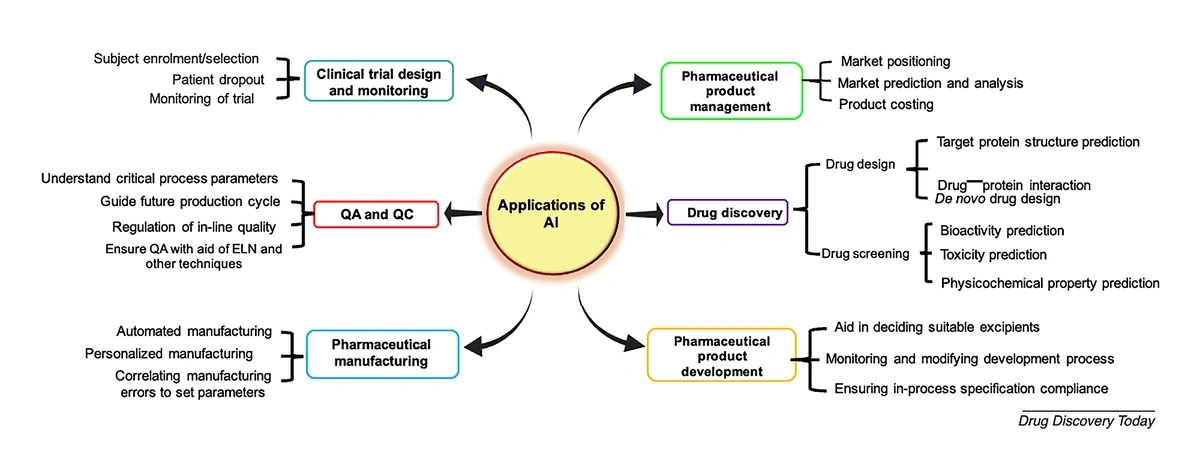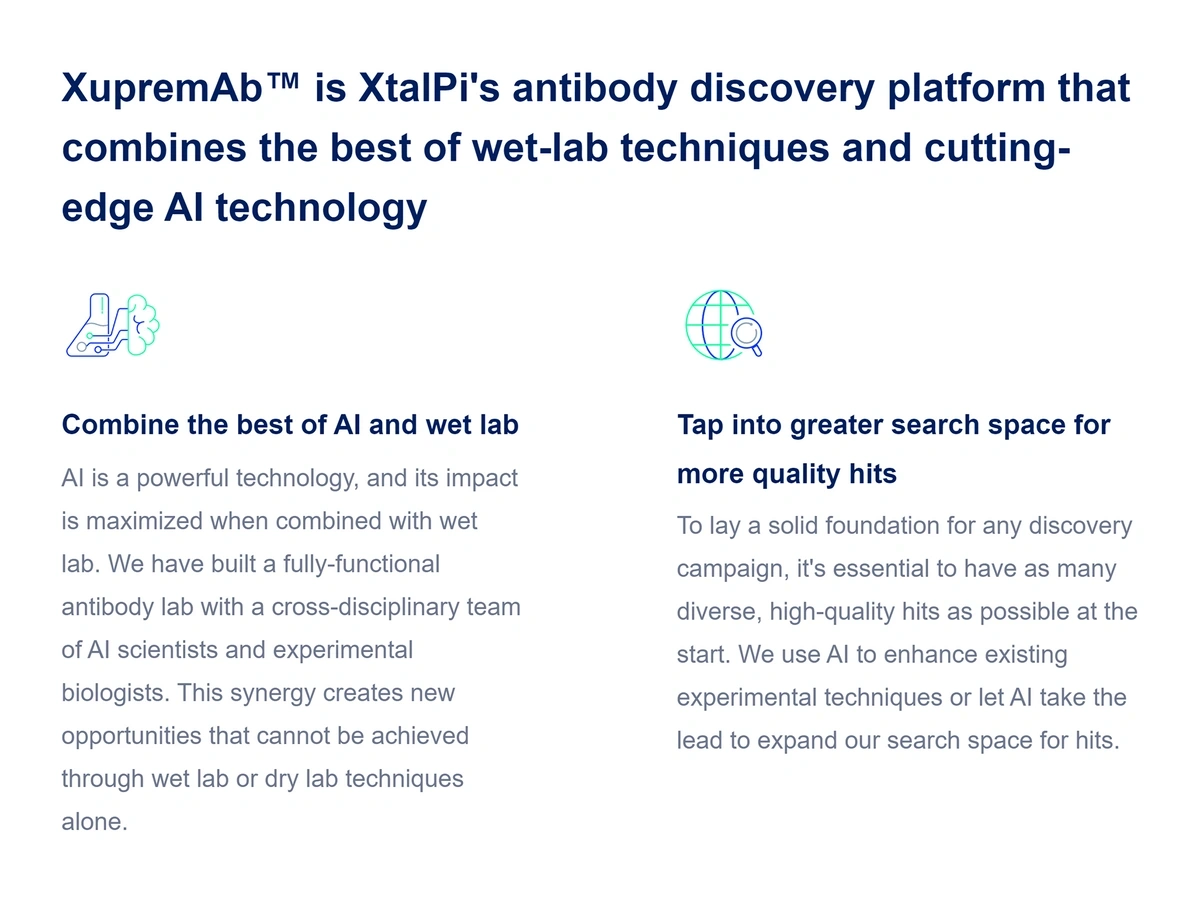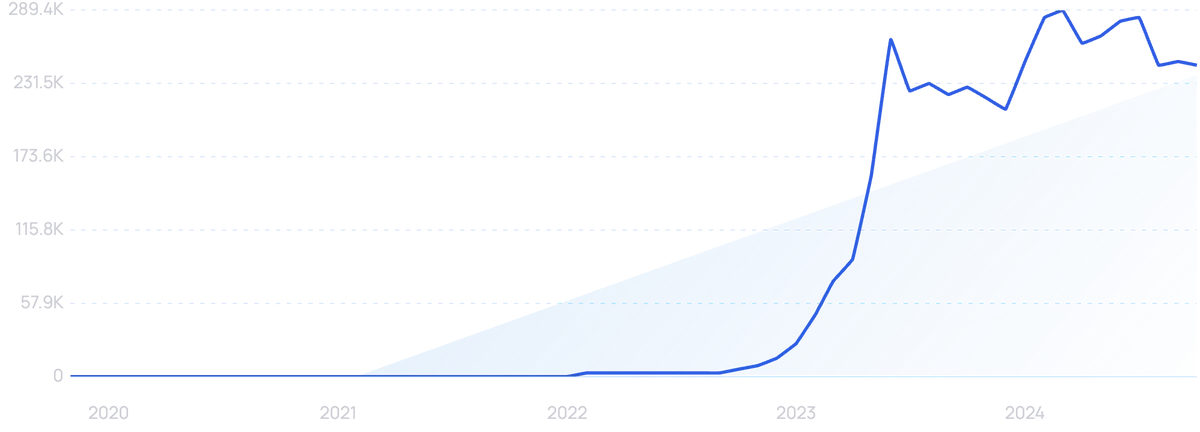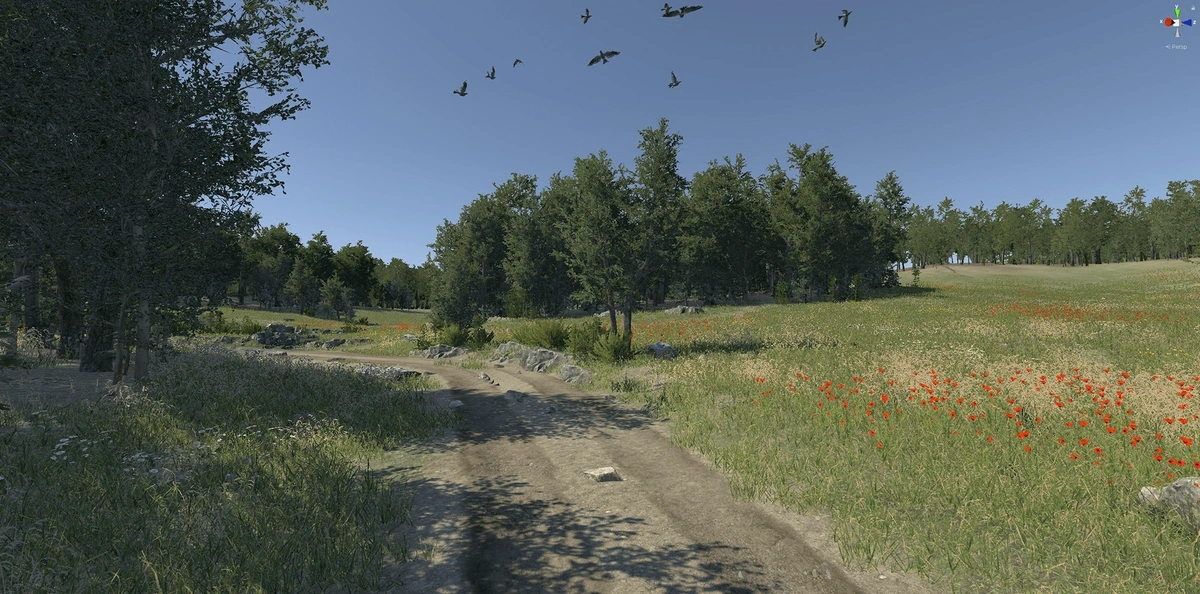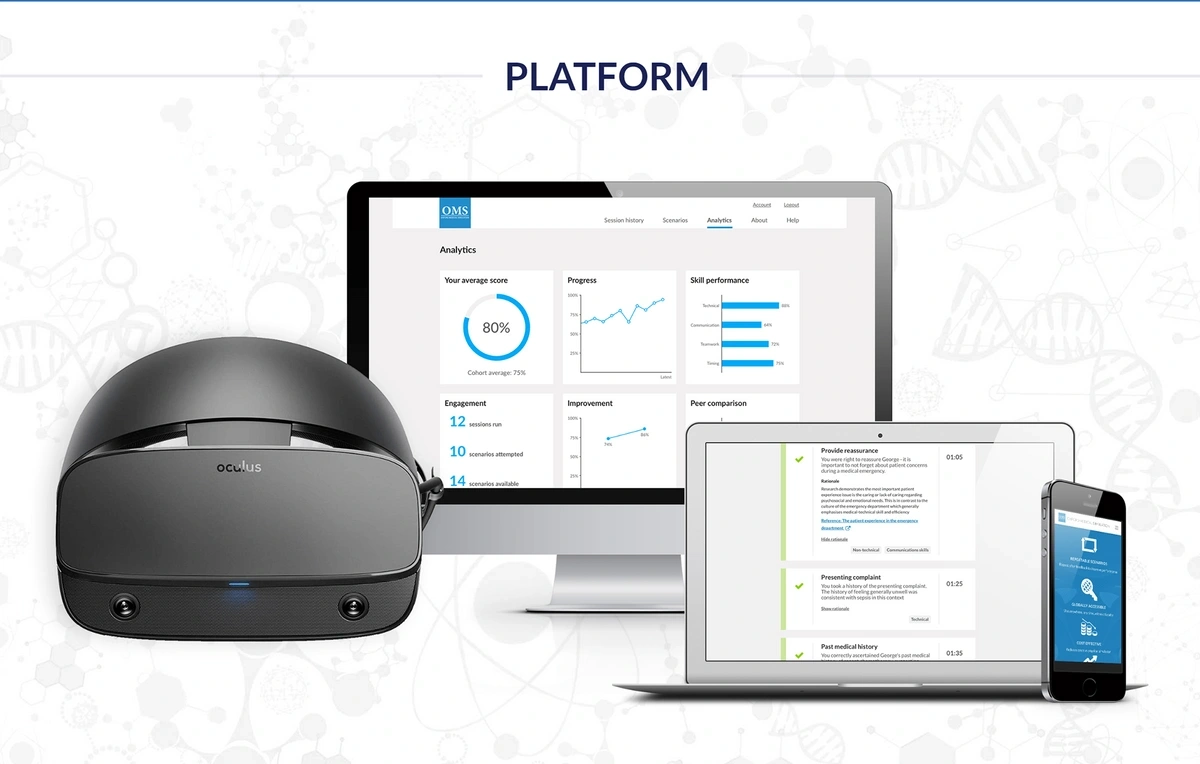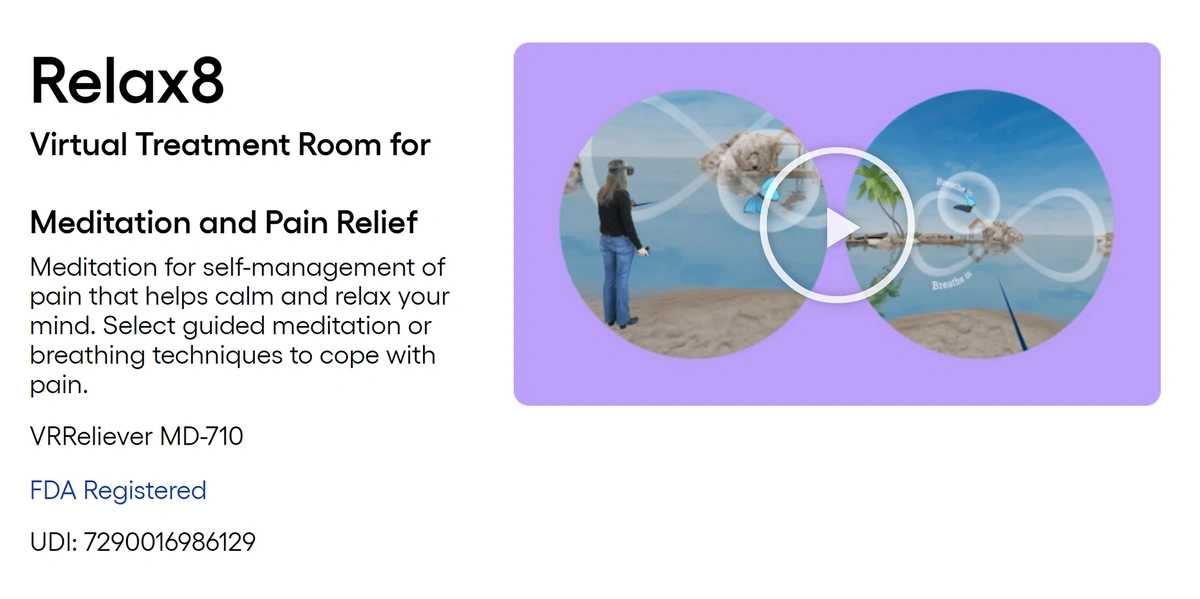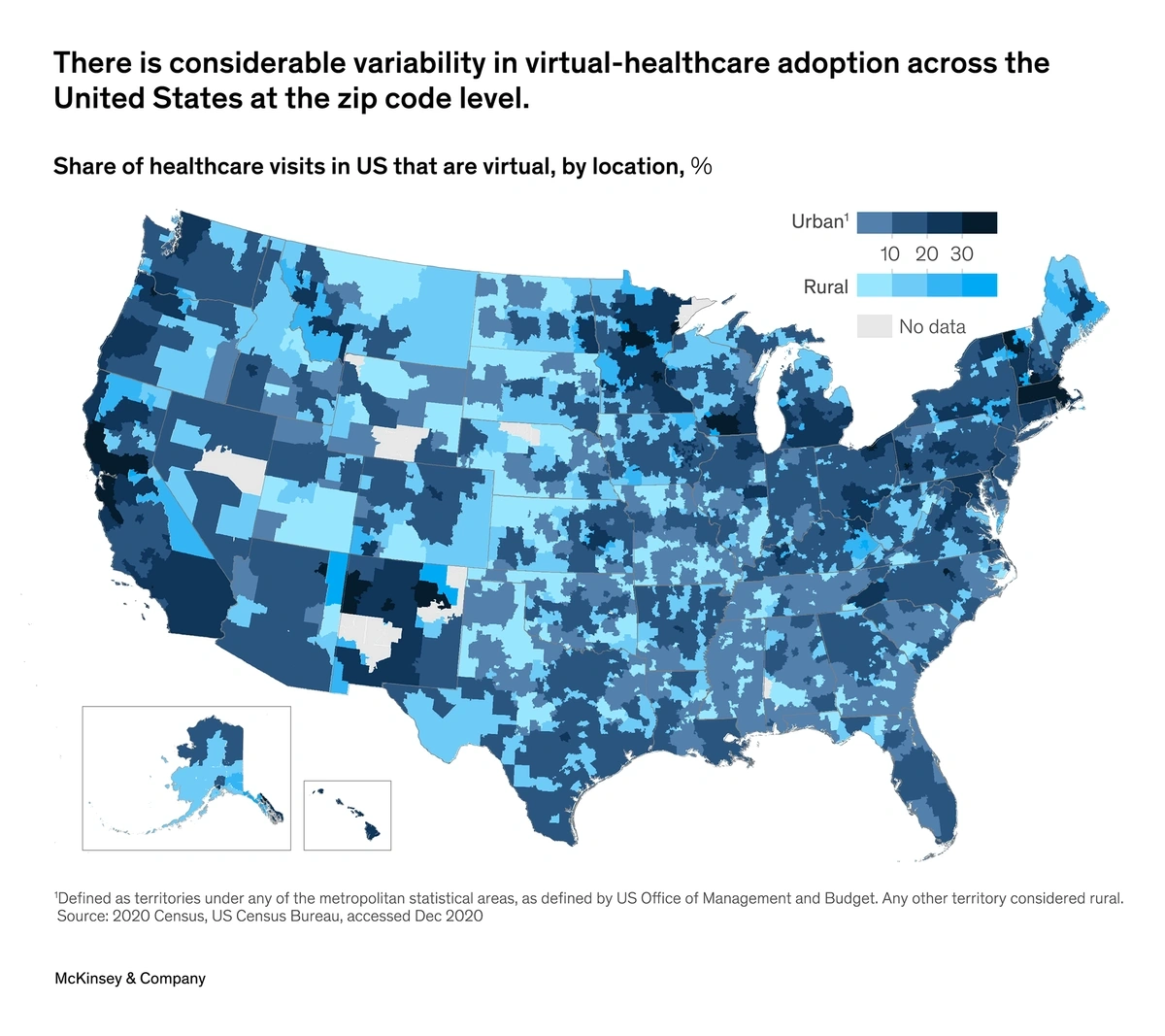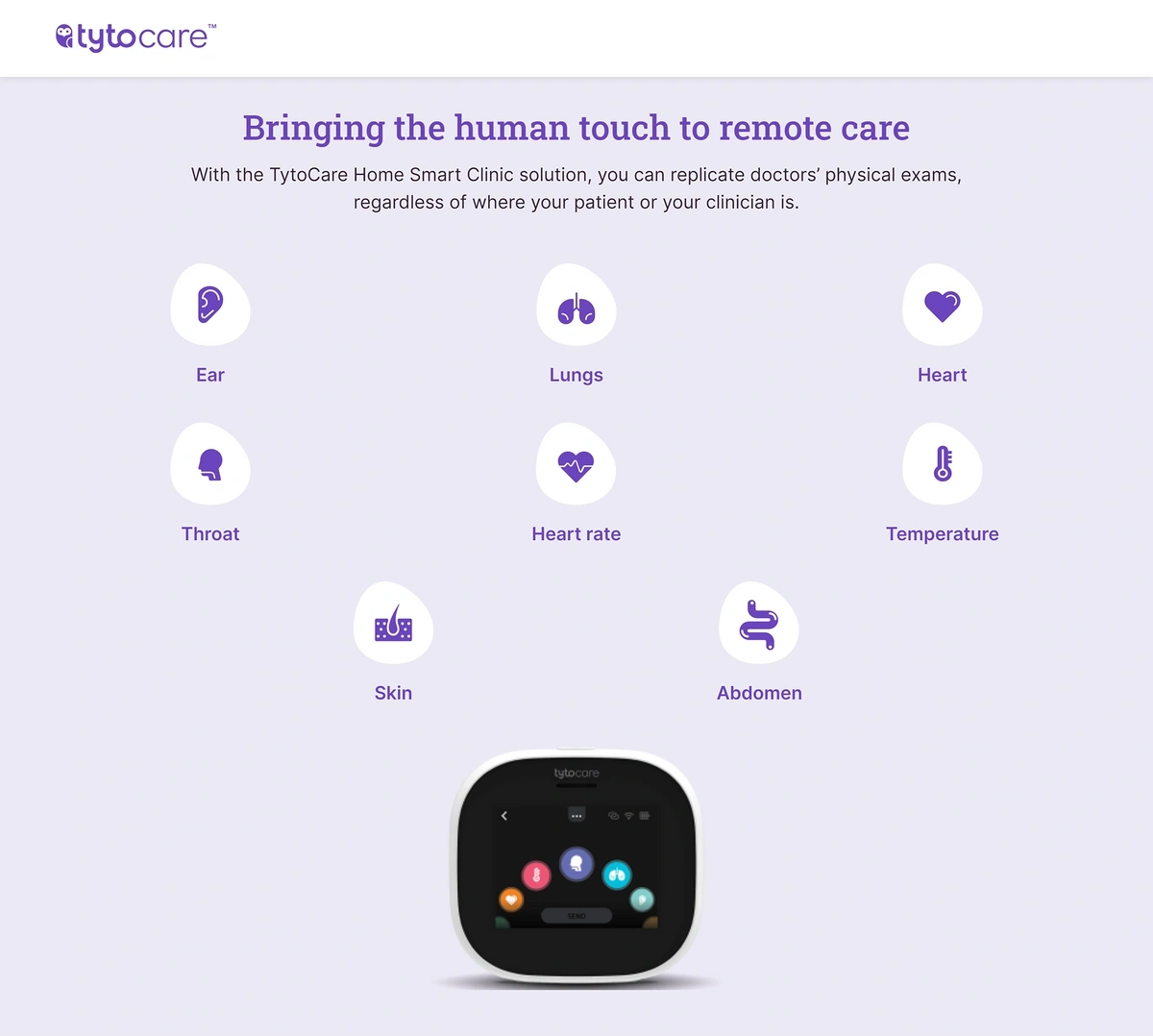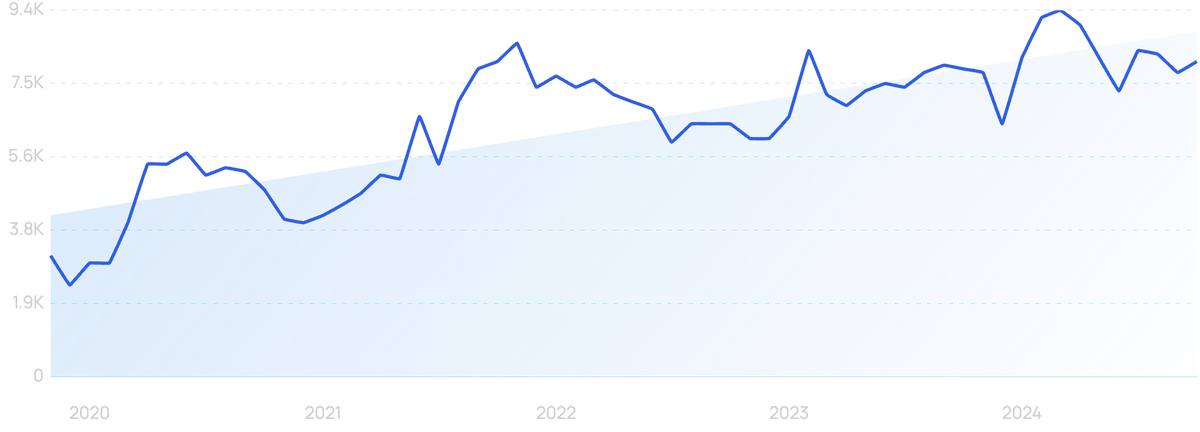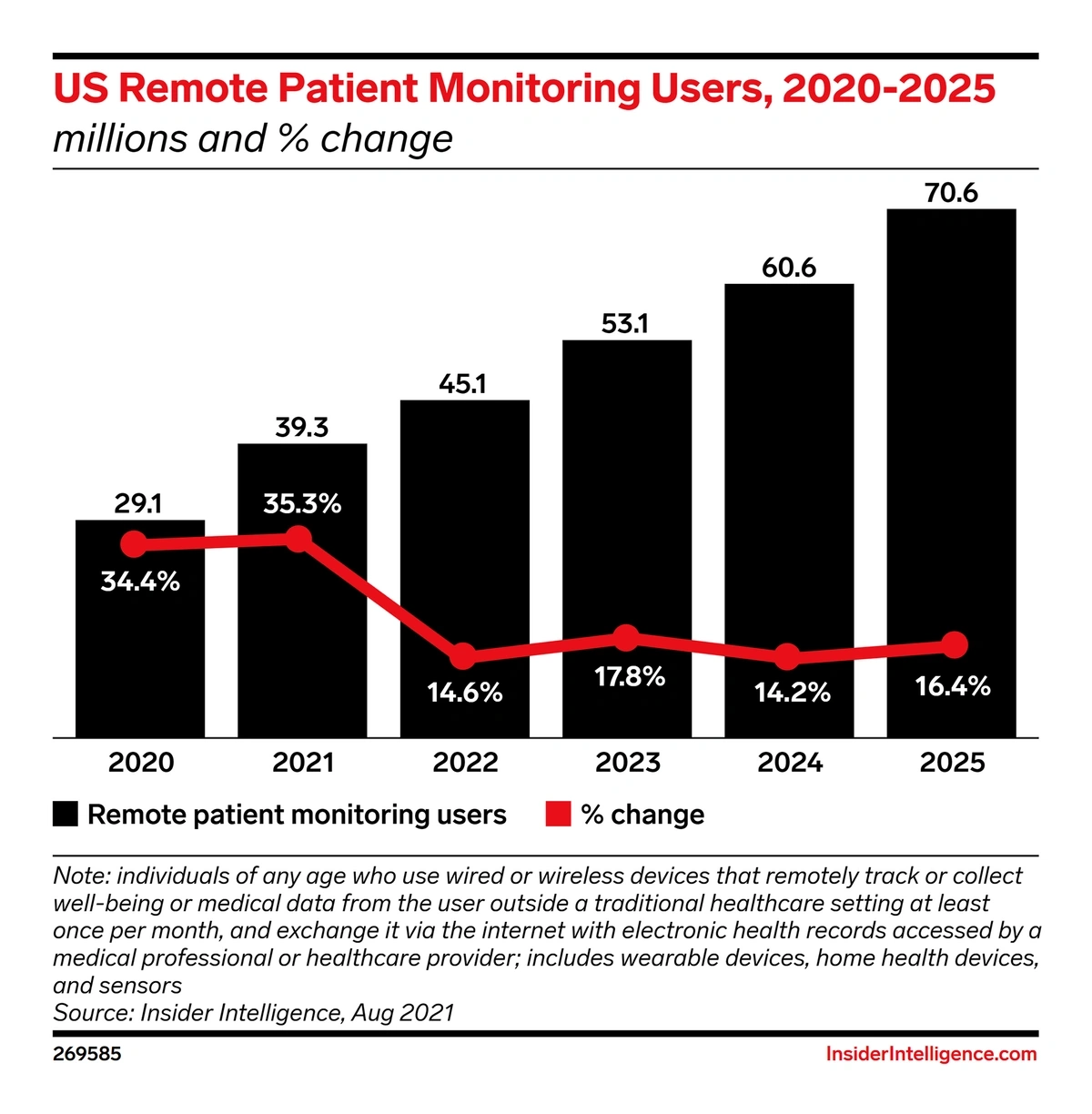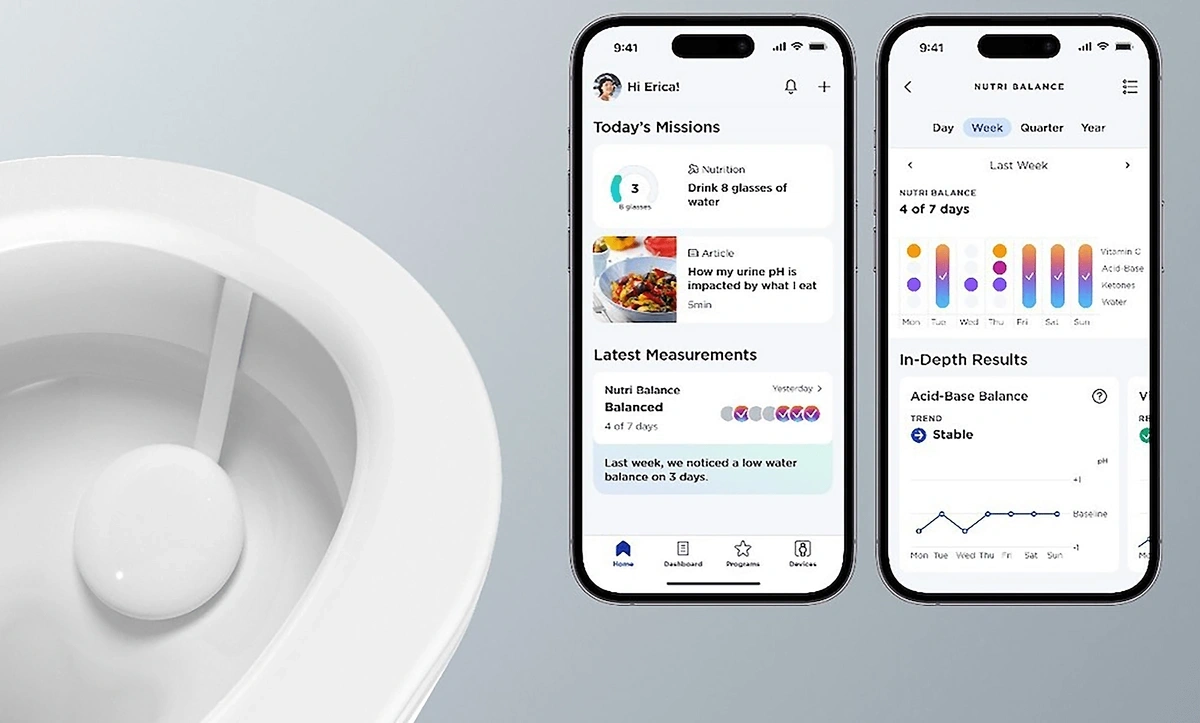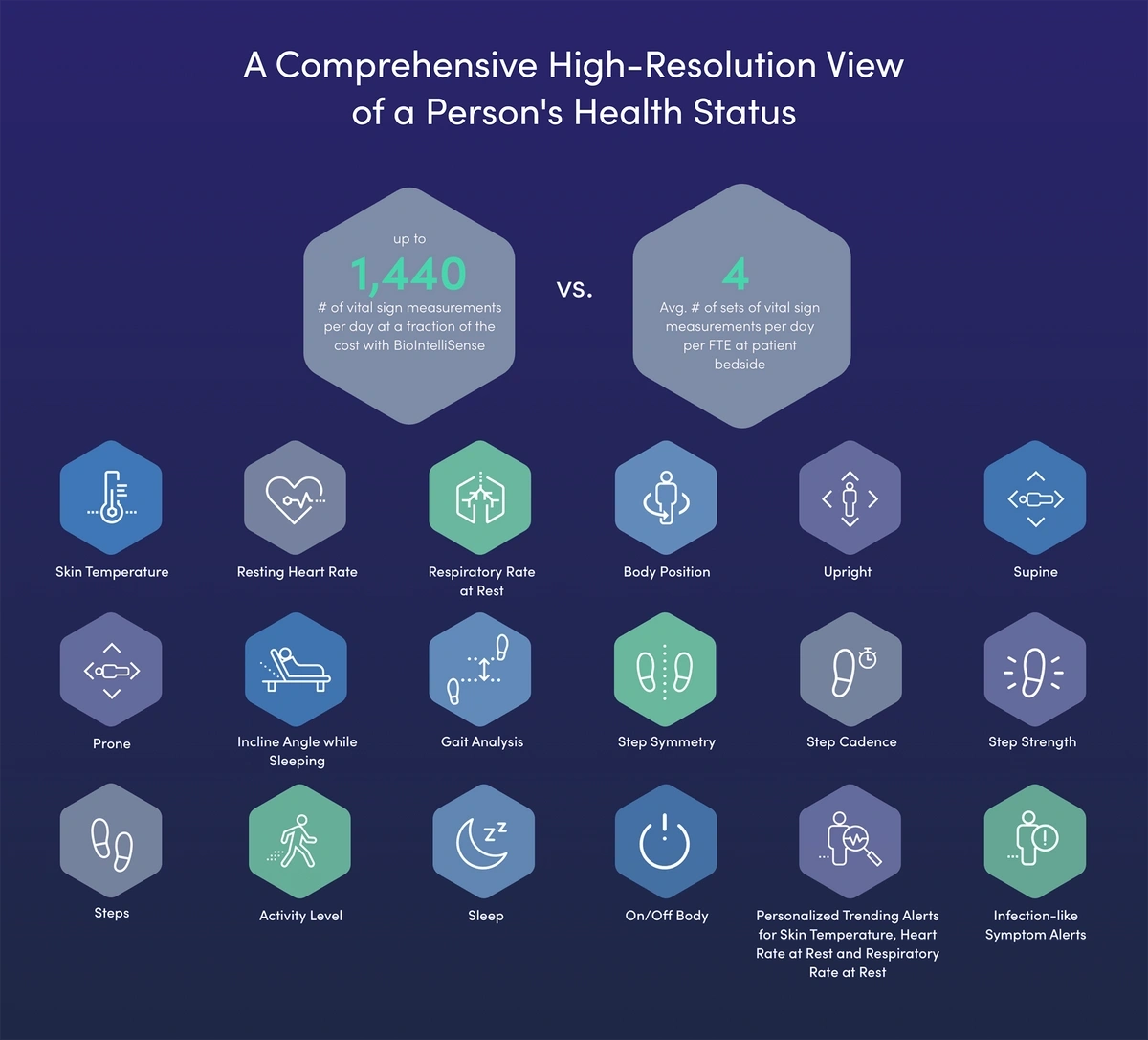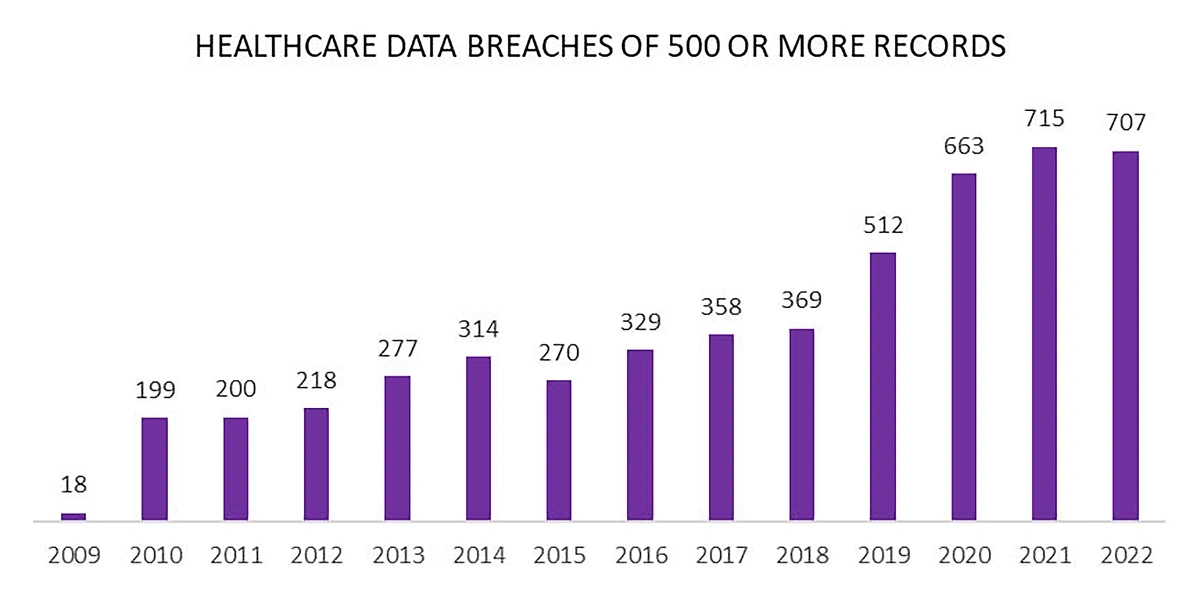
Healthcare Technology: How It’s Being Used in 2025
The healthcare industry is seeing an influx of disruptive technology.
Many in the industry saw the adoption of electronic health records (EHR) as the first major step in healthcare technology. But now, healthcare organizations are beginning to find ways to manage and leverage the wealth of patient data in their systems.
The application of healthcare technology goes way beyond managing data, though. Consider RPM devices, telehealth capabilities, and AI-powered clinical research. That’s just the beginning of what seems to be the next frontier of healthcare.
With that, here are the top technologies impacting the healthcare space today and a few that are still in development.
What Is Healthcare Technology?
Healthcare technology refers to any hardware or software used to augment patient outcomes. Examples of technologies commonly used in healthcare include telehealth software, electronic health records, and IoT devices.
The Current State of Technology in Healthcare
Historically, the healthcare industry has been slower to adapt to change than other sectors. It’s a complex industry with multiple players involved in every step of care.
Data is present, but it’s dispersed and stored in various formats. There are privacy regulations, security concerns, and of course, the desire to “do no harm”.
All of these challenges mean that new technologies can be a hard sell in a healthcare setting.
In the coming year, AI, virtual care, and IoT medical devices are expected to directly impact the healthcare industry.
But as technology has become more reliable and cost-effective in the past decade, there’s been widespread adoption of a few solutions among healthcare organizations. In 2009, EHR systems ushered in a new era of digitized healthcare. More secure IT solutions provided the infrastructure required for data collection.
Many healthcare organizations have adopted new technology simply out of necessity. In 2020, COVID made telehealth a must-have service. And now, AI tools are cutting administrative costs and helping organizations that are struggling to staff their shifts.
As new healthcare challenges come about in the next few years, there’s little doubt that technology will play a key role in solving them. Business models are likely to shift to value-based care and emphasize staff wellbeing. Patients are likely to continue to demand in-home care and monitoring. Collaboration across health systems will become essential to patient care.
The use of healthcare technology and data management has been building for several years.
In short, the adoption of healthcare technology is expected to accelerate in the coming years with the goal of improving patient care and increasing the efficiency of the entire healthcare system.
With that, let’s cover some of the key technologies being utilized in healthcare right now.
Artificial Intelligence in Healthcare
AI is one of the most talked about technologies in the world today, and its use in the healthcare sector is starting to gain momentum.
There are numerous use cases of AI technology augmenting and supporting healthcare organizations.
As of August 2024, there are 950 AI/ML-enabled medical devices approved by the FDA.
In 2022, the FDA approved 91 healthcare devices that utilized AI.
That number more than doubled to 221 in 2023.
Interest in “healthcare AI” is up more than 614% in recent years.
Radiology is, by far, the department that has seen the most widespread AI adoption.
Between 1995-2022, 392 AI tools have been approved for radiology. That’s 75% of all approved AI solutions.
Survey results show radiologists are putting this technology to work.
AI adoption in radiology went from zero to 30% between 2015 and 2020.
The most recent AI technologies for radiology are detecting anomalies that are naked to the human eye.
For example, researchers in the Mount Sinai Health System are using an AI tool to detect changes to brain tissue that may be an early indication of Alzheimer’s Disease.
AI is also being used to detect fractures on X-rays with 92% accuracy, the same rate as a clinician.
In this case, the AI platform performed just as well as clinicians when detecting fractures.
Beyond radiology, AI also has a promising future in the field of pharmaceuticals.
Using traditional technology and methods, it takes about 10 years and $1 billion to get a new drug to the consumer marketplace.
With AI, the process is much faster.
AI can be applied throughout the process of pharmaceutical development.
MIT researchers have developed a deep-learning model that can match drug-like molecules to proteins, a critical step in the development of medicines, 1,200 times faster than the existing model.
AI can also be used to model how drugs will act in the human body and predict toxicity.
Major pharmaceutical companies are investing in AI-powered development.
In June 2023, Eli Lilly partnered with XtalPi, an AI-focused biopharmaceutical research company founded in 2014, in a $250 million deal to use AI in developing drugs.
XtalPi uses AI and robotics technology in its pharmaceutical development platforms.
XtalPi already has deals with Pfizer and Johnson & Johnson.
Another goal of AI technologies is to improve the efficiency and speed of medical workflows.
Around 30% of healthcare organizations have plans to invest in ways to automate repetitive tasks in the coming years.
For example, Google and the Mayo Clinic are partnering on a generative AI solution.
Search volume for “generative AI” is exploding.
The tool will give medical organizations the ability to create their own chatbots that run on their data via Google’s technology.
Medical staff could potentially use the chatbots to ask a question in natural language and quickly get information regarding imaging, labs, and medical history even if that data exists in different formats.
Extended Reality (AR, VR, and MR) in Healthcare
Extended reality has the potential to benefit clinicians, medical students, and patients.
Some clinics are using VR to treat mental health disorders.
For example, it’s being used to help veterans with PTSD confront their traumatic memories in a safe and controlled setting.
A company called XR Therapeutics is using a similar premise to treat patients with phobias and anxiety.
Patients are virtually placed in an environment that contains their phobia or triggers anxiety. This might be walking through a crowded supermarket or approaching a dog.
With this VR treatment, a patient who’s afraid of snakes or bugs might be placed in a virtual woodland in order to confront their fears.
As the patient experiences the virtual environment, a psychologist guides them through anxiety management exercises and coping techniques.
Company data shows their VR treatment sessions can reduce the impact of phobias and anxiety within four sessions. Traditional therapy takes 10-20 sessions.
XR is also being used to educate medical students in college and teach physicians new techniques.
Microsoft says its HaloLens 2 can reduce training time by as much as 30%.
Stamford Health in Connecticut recently became the state’s first health system to launch a VR training program from Oxford Medical Simulation.
The VR platform from Oxford Medical Simulation allows medical professionals to practice skills whenever they’d like and record their data in order to personalize their learning.
Through the program, nurses are practicing patient assessments and patient care skills.
While the nurses are practicing, the VR platform records their performance data and creates custom training plans for each nurse.
The VR system is also being used as part of a $1.3 million grant within the Big 10 Practice-Ready Nursing Initiative, a platform for training nurses at the University of Minnesota, University of Michigan, and Purdue University.
AR technology also has the potential to be used during actual surgeries.
In December 2022, an orthopedic surgeon at the Hospital of Special Surgery in New York became the first to perform a spinal surgery guided by AR.
The AR platform superimposed 3D images of the patient’s anatomy within the surgeon’s field of vision.
In this particular surgery, the surgeon could see the patient’s CT scan superimposed on top of the body and as he moved his surgical instruments, he could see their position on the CT scan. This helped him precisely guide his instruments and control the placement of the screws.
In the future, VR technology may even prevent the need for anesthetics during minor surgeries.
A trial conducted by XRHealth looked at 34 patients having hand or wrist surgery. All patients were given a peripheral nerve block, but selected patients were guided into an immersive VR environment with relaxation and pain reduction techniques.
XRHealth’s platform offers a variety of medical applications like relaxation, stress management, and physical therapy.
The majority of patients receiving the VR technology (13 out of 17) didn’t need IV sedatives during surgery. And, those patients were able to recover from surgery and leave the recovery room quicker than patients who received traditional IV sedatives.
Virtual Healthcare
Telehealth began as a tool to provide care to patients during the pandemic, but it’s now exploded into a major healthcare trend.
The adoption of telehealth remains high.
In February 2020, telehealth was responsible for just 1% of healthcare visits.
Now, even post-pandemic, it’s responsible for up to 17% of visits.
Virtual healthcare adoption is highest in urban areas.
But today, this type of healthcare is much more than a video conference.
Telehealth is just one portion of an entire segment of healthcare: virtual healthcare.
There are a number of other technologies that accompany and complement telehealth like remote patient monitoring (RPM), IoT devices, online patient portals, and personal health apps.
Take Tytocare, for example.
The telehealth company offers an AI platform in which patients can share their symptoms. After that, they use Tyto’s specialized device that can be used to conduct a thorough physical exam from home.
The device has attachments that can turn it into an otoscope, stethoscope, or tongue depressor.
All of the data is analyzed by AI and sent to a doctor. Then the patient receives a diagnosis.
TytoCare’s telehealth platform can diagnose respiratory, cardiac, and GI ailments.
The FDA recently cleared Tyto’s wheeze detection algorithm.
The company has already brought in more than $156 million in funding.
Convenient healthcare like this is beneficial to both patients and medical facilities. Patients receive treatment from the comfort of their homes and medical organizations can ease the burden placed on their staff.
RPM technology provides another method of monitoring and treating patients virtually.
Search volume for “remote patient monitoring” is up nearly 161% in the past 5 years.
This technology provides a continuous flow of information from patients to doctors by connecting data from in-home medical devices to smartphone apps and relaying the data to the physician’s office.
In 2025, it’s predicted that more than 70 million Americans will utilize RPM.
RPM adoption is still growing, predicted to be up 16.4% year-over-year in 2025.
The earliest versions of RPM technology were things like blood pressure cuffs and continuous glucose monitoring, but the industry now has several new RPM tech solutions for patients.
Researchers from UC Davis Health recently unveiled an RPM program that utilizes an in-home inhaler outfitted with sensors that measure respiration patterns and inhaler usage statistics. The program is specially designed for COPD patients.
There’s also an RPM device that performs urine analysis from home. It’s already available in Europe but has not been cleared by the FDA yet.
The urine analysis RPM device has particular usefulness for women hoping to become pregnant and diabetics.
The device can measure numerous data points like fertility levels, pH, vitamin C, ketone levels, and specific gravity.
For comprehensive patient monitoring, there’s the BioButton from BioIntelliSense.
The latest RPM devices can record numerous metrics.
The device measures just one inch but records 24 data points like temperature, gait analysis, and symptoms like coughing or sneezing. In total, it can produce up to 1,440 readings per day.
Emerald Innovations, a startup RPM company based in Boston, is looking to make it even easier for patients to use RPM devices.
The company recently announced plans to develop an AI-powered contactless sleep monitor for patients with Rett syndrome, a disorder that can cause sleep problems and seizures.
Their device works by analyzing nearby radio waves in order to measure the sleep stages and breathing patterns of patients.
Their technology could also be applicable to patients with Parkinson’s Disease and ALS.
Blockchain in Healthcare
With blockchain technology, data can be secured in an incorruptible, transparent, and decentralized log. This makes it the ideal solution for storing healthcare data.
Security is a critical issue for all medical facilities.
In recent years, hundreds of healthcare organizations have fallen prey to hackers.
There were 51 data breaches involving 500 or more patient records in May 2024 alone. The total number of breaches in 2023 was 741 – a record high.
Healthcare data breaches have skyrocketed since 2019.
With blockchain, electronic health records could be encrypted and only the patient would be able to unlock their data. There’s no middle-man needed.
Patientory is a blockchain-focused startup that’s giving patients control over their health data.
With Patientory, patients can manage their healthcare data via a secure blockchain app.
The company’s two decentralized applications give patients the ability to securely access and store their health data. They can also share the data with healthcare providers.
One critical factor in Patientory’s system is that it fosters interoperability. Instead of data being stored in silos, patients have control of their data and can seamlessly share it with providers.
The platform currently has 45,000 users.
Blockchain technology can also improve healthcare supply chains.
One example is tracking medications to make sure they’re authentic.
Studies show that up to 2% of all medications consumed in developed nations are counterfeit. In developing countries, that number is 10%.
Implementing blockchain technology in the pharmaceutical industry could keep counterfeit drugs out of the hands of patients.
Blockchain can track the pharmaceutical supply chain and trace a drug from sourcing to the end user. Theoretically, every time a drug was touched, it’d be logged in the blockchain ledger.
In late 2022, Mitsubishi Logistics announced they would use blockchain technology to allow clients to track pharmaceutical shipments to ensure they were properly stored throughout the entire supply chain.
Smart contracts are another key use of blockchain in healthcare.
These are lines of code running on top of blockchains that are automatically executed once a set of predetermined conditions are met.
With smart contracts, agreements can be carried out without a third party being involved.
In the healthcare industry, smart contracts have the potential to streamline tedious processes, create efficient record-keeping procedures, and speed up transactions.
For example, smart contracts can improve the claims and billing process. Payers, providers, and patients would all have information logged on the blockchain and that activity would be visible to all parties. This has the potential to make disputes much easier to solve and provide transparency in a space that’s very cluttered today.
Much of the medical claims process could be automated through smart contracts technology. That could result in a faster claims process and greater patient satisfaction.
Conclusion
Several recent innovations are likely to prove their value to the healthcare industry in the next few years. Technologies like AI, XR, and RPM have already started to change the way medical organizations think about patient care, diagnostics, and education.
Many of these new tech solutions will be aimed at helping organizations manage the influx of data. But as security, privacy, and interoperability come into focus, it’s clear that traditional data storage operations are no longer sufficient for the needs of the industry. Solutions like AI and blockchain are needed in order to protect the data and make the most of it.
Embracing these technologies and creating a culture of innovation may be a slow process for healthcare organizations. However, when faced with all of the potential benefits, it will become increasingly difficult for organizations to ignore the growing momentum of these tech platforms.
Stop Guessing, Start Growing 🚀
Use real-time topic data to create content that resonates and brings results.
Exploding Topics is owned by Semrush. Our mission is to provide accurate data and expert insights on emerging trends. Unless otherwise noted, this page’s content was written by either an employee or a paid contractor of Semrush Inc.
Share
Newsletter Signup
By clicking “Subscribe” you agree to Semrush Privacy Policy and consent to Semrush using your contact data for newsletter purposes
Written By


Josh is the Co-Founder and CTO of Exploding Topics. Josh has led Exploding Topics product development from the first line of co... Read more


